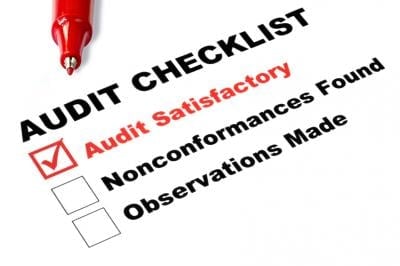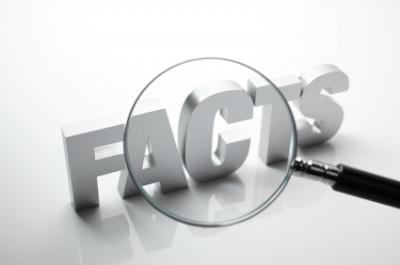January 26, 2016
January 26, 2016
The Food and Drug Administration Safety and Innovation Act (FDASIA), was signed into law on July 9, 2012. This law significantly expanded the FDA’s authority and strengthened its ability to safeguard and advance public health. Section 501 (21 U.S.C. 351) was amended by clarifying the term current Good Manufacturing Practices (cGMP), which emphasized the importance of maintaining adequate oversight and control over all aspects of pharmaceutical manufacturing. These controls include ensuring the quality of the entire pharmaceutical supply chain, management of risks, ensuring the safety of raw materials and active pharmaceutical ingredients, contract manufacturing, and packaging. An effective risk-based supplier qualification program is critical to ensure the safety, purity, efficacy, and quality of a drug product and meet the FDA’s requirements for maintaining cGMPs.
An effective supplier qualification program should include, at a minimum, the following critical elements:
Before a firm jumps right into the supplier qualification process, it should perform an initial screening of the supplier. The screening process should include any potentially impacted departments; such as purchasing, supplier relations, inventory management, shipping and receiving, and quality assurance. The initial screening process should confirm that the supplier can meet the specifications for the component or service to be provided, and is properly licensed to manufacture the component being considered for purchase by the firm, or for the service being utilized by the firm.
Drugmakers should conduct a review of the supplier’s regulatory history with the appropriate governing bodies. The initial screening process can typically be performed using a screening questionnaire. The questionnaire should request that the potential supplier provide appropriate supporting documentation for its answers, where appropriate.
Supplier screening questionnaires should be risked based and should focus on the service or material to be provided. For example, the questionnaire should request more detail, data, and documentation if the supplier is a Contract Manufacturing Organization, Contract Laboratory, or an Active Pharmaceutical Ingredient supplier.
All related departments should review the screening questionnaire and, formally document any decision regarding the status of the questionnaire (whether it is being accepted as is, does not meet the initial requirements and is being rejected, or additional information is needed before approval can be granted).
The next step in the qualification process will typically be an on-site audit of the supplier’s facility or facilities. In rare cases where the supplier is providing a basic service (such as supporting the firm’s staffing group or supplying items such as disposable Personal Protective Equipment), an on-site audit may not be desired or required. Any decision to not perform an on-site audit of a supplier should be based on risk, and the decision should be documented and approved by the firm’s quality assurance group.
Once a qualification audit is scheduled it is important to ensure that the appropriate audit team is assigned to perform the audit based on the auditors’ expertise & the services to be provided by the prospective supplier. If the firm does not have the appropriate expertise to perform the qualification audit, they should seek out the assistance of a consulting firm or other organization to conduct the audit.
The audit should include a specific audit agenda, focusing on the critical elements that are necessary to ensure the quality of the product or service meets the requirements and specifications of the firm. Depending on the service being provided, potential agenda items could include the condition of the facilities, qualification of the equipment used, training of personnel, effectiveness of the quality system, and laboratory controls. To ensure an efficient and effective audit the firm should request relevant documentation to support the audit in advance, allowing the audit team time to review the material prior to arriving at the site.
After the completion of the audit, the firm must determine the status of the supplier based on several factors. Should the audit identify deficiencies, the firm must determine whether or not the deficiencies prevent proceeding with (and using) the supplier, or if the supplier will be allowed to respond to the audit with proposed corrective actions that would be sufficient to allow for the qualification of the supplier.
The firm should have multiple levels of qualification status for a supplier based on specific criteria defined by the firm. A supplier might be considered certified by the firm after a successful qualification audit; testing of multiple lots of their materials; and an evaluation of their performance regarding on-time deliveries, deviations, or out of specifications, and any other performance criteria established by the firm. The supplier might also be considered approved, conditionally approved, or unapproved.
Conditional approval should be defined by the firm with specific requirements that must be met by the supplier in order to obtain an approved status. The firm should have defined processes for changing the qualification status of any supplier, and for actions required if a critical supplier (a CMO or API supplier) is disqualified. The process should define how disqualifying a supplier is managed, steps necessary for the firm to regain qualification, impact to the business when disqualifying a supplier, and mitigating the risk of materials or products already on the market which utilize the now disqualified supplier.
Once the supplier is qualified and the firm begins using the supplier on a regular basis, the supplier qualification process is not complete. The firm should monitor the overall performance of the supplier, ensuring that expected performance metrics are clearly communicated to the supplier, measured, and reviewed by senior management with the supplier on a regularly scheduled basis. Negative or abnormal trends should be addressed with appropriate corrective action plans and the effectiveness of corrective actions should be measured. The performance criteria that is measured will vary based on the product or service provided by the supplier, but some of the more common performance measurements to monitor and review include:
On-going performance monitoring should be used to determine the frequency of future supplier audits to be conducted. In addition, performance monitoring should also provide a signal that a significant change in a process, staffing levels, or other challenges that warrant the firm taking a more significant role in the oversight of the supplier. The firm should have well-defined criteria for the performance metrics that are used, and when specific action should be taken.
A robust supplier qualification program is a critical element in a compliant quality system for any pharmaceutical company. Having such a program assists a firm in minimizing regulatory risks, preventing significant interruption of supply, and improving communication between the company and its suppliers.
If you have any questions or thoughts on this blog post or others, please don’t hesitate to contact us today.

January 22, 2013
With the increased pressures of cost control for manufacturers of FDA-regulated products and the rapid expansion of globalization of the supply chain, the expectations of manufacturers and sponsors...

March 12, 2013
Unexpected events often happen in the everyday world. However, in the regulated world great efforts are made to minimize the severity and frequency of unexpected events. Yet, despite best efforts,...
May 20, 2020
The coming pharmaceutical industrial revolution, Pharma 4.0, is an implementation of new systems into the various manufacturing processes leading to an automated production. Introduction of these...